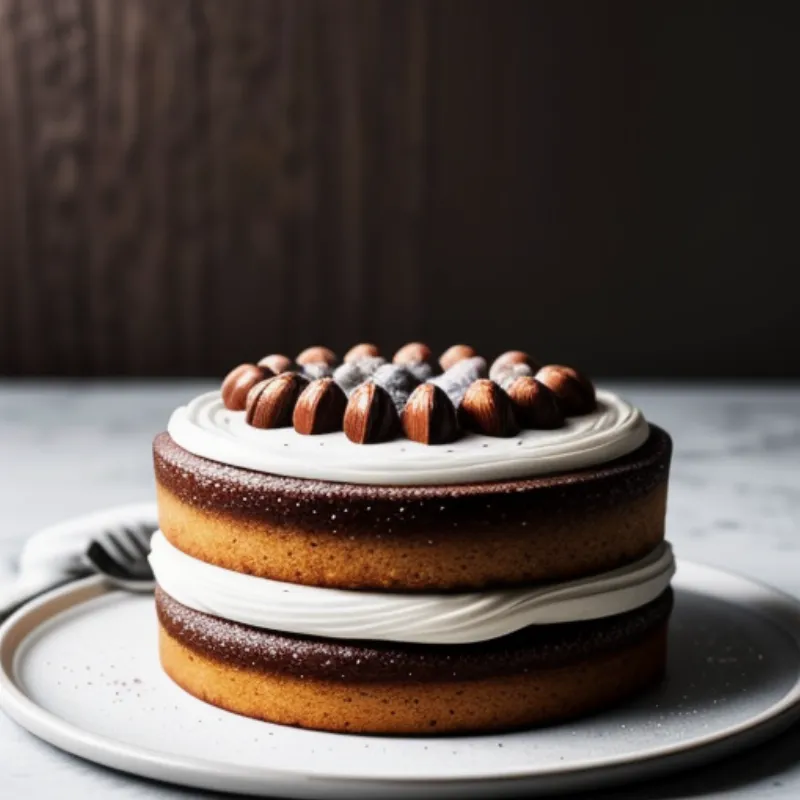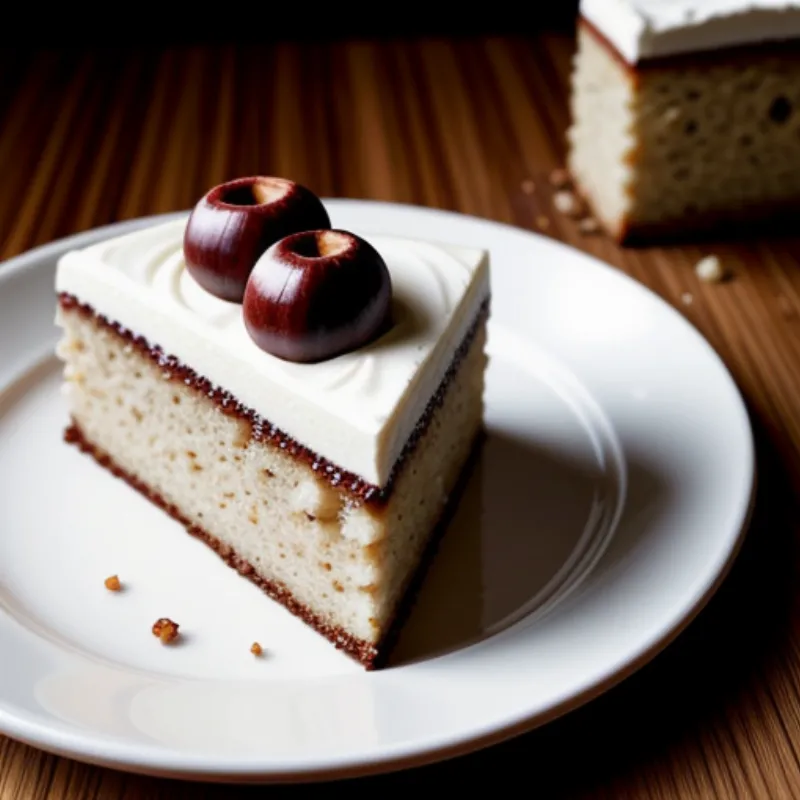Chestnut cake, a true embodiment of fall flavors, is a delightful treat that captures the essence of the season. With its subtly sweet and nutty taste, this cake is perfect for any occasion, from cozy evenings at home to festive gatherings. Whether you’re an experienced baker or just starting out, this comprehensive guide will equip you with everything you need to know to create a mouthwatering chestnut cake that will impress your family and friends.
A Journey Through Chestnut Cake
Chestnut cake has a rich history, dating back centuries in various European and Asian cultures. In Italy, a similar cake called “Castagnaccio” has been enjoyed since the Renaissance era. This rustic delicacy, made with chestnut flour, olive oil, and raisins, reflects the simplicity and resourcefulness of traditional Italian cuisine.
Chef’s Tip: “For an authentic Italian twist, try incorporating some rosemary or orange zest into your chestnut cake batter,” suggests Chef Lorenzo, a renowned pastry chef specializing in regional Italian desserts.
Ingredients for Chestnut Cake
For the Cake:
- 2 cups chestnut flour
- 1 cup all-purpose flour
- 1 teaspoon baking powder
- 1/2 teaspoon baking soda
- 1/4 teaspoon salt
- 1 cup (2 sticks) unsalted butter, softened
- 1 3/4 cups granulated sugar
- 4 large eggs
- 1 teaspoon vanilla extract
- 1 cup buttermilk
For the Frosting:
- 1 cup unsalted butter, softened
- 3 cups powdered sugar
- 1/2 cup chestnut puree
- 1/4 cup heavy cream
- 1 teaspoon vanilla extract
Equipment You’ll Need
- 2 round cake pans (9 inches)
- Parchment paper
- Electric mixer
- Spatulas
- Measuring cups and spoons
- Mixing bowls
- Whisk
- Serrated knife
- Offset spatula or butter knife
Step-by-Step Instructions
1. Preparing the Cake Pans
Grease and flour two 9-inch round cake pans. Line the bottoms with parchment paper for easy removal later.
2. Combining Dry Ingredients
In a large bowl, whisk together the chestnut flour, all-purpose flour, baking powder, baking soda, and salt.
3. Creaming Butter and Sugar
In a separate bowl, cream the softened butter and sugar together using an electric mixer until light and fluffy.
4. Incorporating Eggs and Vanilla
Beat in the eggs one at a time, followed by the vanilla extract.
5. Alternating Wet and Dry Ingredients
Gradually add the dry ingredients to the wet ingredients, alternating with the buttermilk. Begin and end with the dry ingredients, mixing until just combined.
Baker’s Note: Avoid overmixing the batter as it can result in a dense cake.
6. Baking the Cake Layers
Pour the batter evenly into the prepared cake pans. Bake in a preheated oven at 350°F (175°C) for 30-35 minutes, or until a toothpick inserted into the center comes out clean.
7. Cooling the Cake
Allow the cakes to cool in the pans for 10 minutes before inverting them onto a wire rack to cool completely.
8. Making the Frosting
While the cakes cool, prepare the frosting. In a mixing bowl, cream together the butter and powdered sugar until smooth.
9. Adding Chestnut Puree and Flavorings
Beat in the chestnut puree, heavy cream, and vanilla extract until the frosting is light and fluffy.
10. Assembling and Frosting
Once the cakes have cooled completely, level the tops using a serrated knife if necessary. Place one cake layer on a serving plate and spread a generous amount of frosting over the top. Carefully place the second cake layer on top and frost the entire cake.
Decoration Tip: Get creative with decorations! Roasted chestnuts, chocolate shavings, or a dusting of cocoa powder can elevate the visual appeal of your chestnut cake.
 Chestnut Cake
Chestnut Cake
FAQs about Chestnut Cake
Q: Can I substitute chestnut flour with another type of flour?
A: While chestnut flour gives the cake its unique flavor, you can substitute it with a combination of almond flour and all-purpose flour for a similar texture and taste.
Q: How should I store chestnut cake?
A: Store the cake in an airtight container at room temperature for up to 2 days or in the refrigerator for up to 5 days.
Q: Can I freeze chestnut cake?
A: Yes, you can freeze the unfrosted cake layers for up to 2 months. Wrap them tightly in plastic wrap and then in aluminum foil before freezing. Thaw overnight in the refrigerator before frosting and serving.
 Chestnut Cake Slice
Chestnut Cake Slice
Conclusion
Baking a chestnut cake is an enjoyable experience that results in a truly special dessert. By following these detailed instructions and incorporating your own personal touches, you’ll be able to create a chestnut cake that will impress your loved ones.
Don’t be afraid to experiment with different frostings, decorations, and fillings. For a festive twist, you can even transform this cake into a stunning “Mont Blanc Cake” or a classic Yule log cake (“Stump de Noel”).
Share your chestnut cake creations with us in the comments below. We’d love to hear about your baking adventures!
